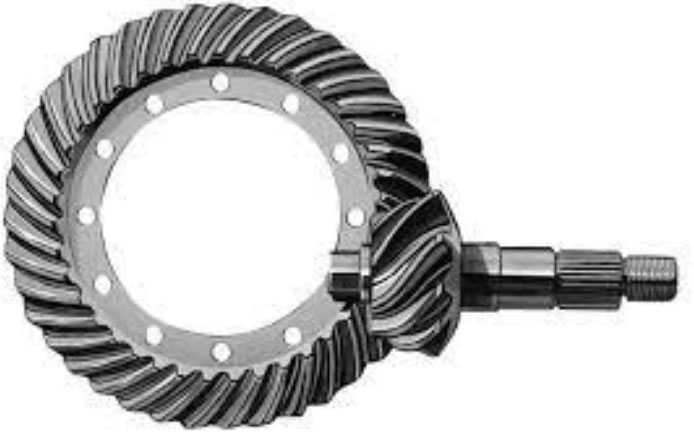Hypoid gears are a type of spiral bevel gears that have unique design characteristics and find various applications in different industries. Here’s an overview of their design, applications, and advantages:

Design:
Hypoid gears are designed with a hypoid offset, which means the pinion gear and ring gear axes are non-intersecting and non-parallel. This offset allows for more flexibility in gear placement, enabling the design of compact and efficient gearboxes. Hypoid gears have curved teeth that gradually mesh, providing smoother and quieter operation compared to straight bevel gears.
Applications:
Hypoid gears are widely used in automotive, aerospace, marine, and industrial applications. Some common applications include:
- Automotive Drivetrains: Hypoid gears are extensively used in rear-wheel drive vehicles, especially in the differential gears. They allow for efficient power transmission and torque redirection between the drive shaft and rear wheels.
- Industrial Gearboxes: Hypoid gears are suitable for high-torque applications where space is limited, such as in heavy machinery, mining equipment, and industrial gearboxes. They provide a compact and robust solution for transmitting power.
- Power Tools and Appliances: Hypoid gears are employed in power tools, such as circular saws and angle grinders, as they offer high torque transmission and smooth operation. They are also used in appliances like mixers and blenders for efficient power transfer.
- Aerospace and Defense: Hypoid gears are utilized in aircraft systems, including landing gear mechanisms, helicopter tail rotors, and various aerospace applications that require compact and reliable power transmission.
Advantages:
- Higher Torque Capacity: Hypoid gears can transmit higher torque compared to other types of gears due to their larger contact area and greater tooth engagement. This makes them suitable for heavy-duty applications.
- Efficiency: Hypoid gears have higher efficiency compared to worm gears and other types of gear systems. The curved tooth profile allows for smooth and efficient power transmission, reducing energy losses.
- Compact Design: The offset nature of hypoid gears enables a more compact design of gearboxes, making them suitable for applications with space constraints.
- Quiet Operation: Hypoid gears exhibit low noise and vibration levels, thanks to their curved tooth profile and gradual meshing action. This makes them suitable for applications that require quiet operation, such as automotive differentials.
- Versatility: Hypoid gears offer versatility in terms of shaft arrangements and configurations. They can accommodate different shaft angles and offset distances, providing flexibility in gear system design.
It’s important to note that hypoid gears also have some considerations, including specialized manufacturing processes, precise alignment requirements, and specific lubrication needs. Consulting with gear manufacturers and industry experts is recommended to ensure proper design, installation, and maintenance of hypoid gears in your specific application.
